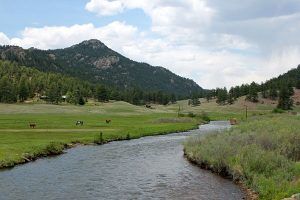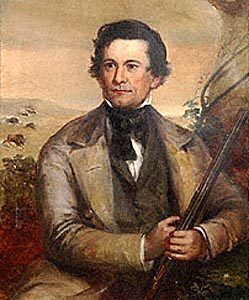In the summer of 1837, traders Henry Fraeb and Peter Sarpy arrived at a location on the South Platte River a few miles north of present-day Fort Lupton in Weld County, Colorado. Backed by the Pratte, Chouteau & Company (the successor to the American Fur Company) of St. Louis, Missouri, they arrived with $10,909.75 worth of goods for trade with the Cheyenne and Arapaho Indians who frequented the area. It was also known as Fraeb’s Post.
They soon built a stockaded adobe trading post at the cost of $12,000, which they named Fort Jackson. Although no records exist of its size, it was probably similar to other forts situated on the South Platte River and is estimated to have been about 100 square feet with high walls and bastions.
It was one of four trading posts located along a 13-mile stretch of the South Platte River along the Trapper’s Trail that ran between Fort Laramie, Wyoming, down to the Arkansas River, and then along the Taos Trail to New Mexico. The other posts were Fort Vasquez, established in 1835, Fort Lupton, established in 1836, and Fort St. Vrain, established in 1837. In Wyoming, these four posts were located roughly midway between Bents Old Fort on the Arkansas River and Fort William (later known as Fort Laramie).
With stiff competition from the other area trading posts, Fort Jackson was very aggressive, and Peter Sarpy said, “My object is to do all harm possible to the opposition and yet without harming ourselves.” During the trading year of 1837–38, inventory records show that the post took in 2,920 buffalo robes worth $9,715.87.
However, the trading post could not compete with the Bent brothers’ interests at nearby Fort St Vrain, and in October 1838, the post was sold to Bent, St. Vrain & Company. Following the transfer of the post inventory, Fort Jackson was destroyed.
Fort Vasquez was the next to close its doors in 1842, and Fort Lupton soon followed in 1844. The larger Fort St Vrain lasted until 1848.
© Kathy Alexander/Legends of America, updated February 2022.


